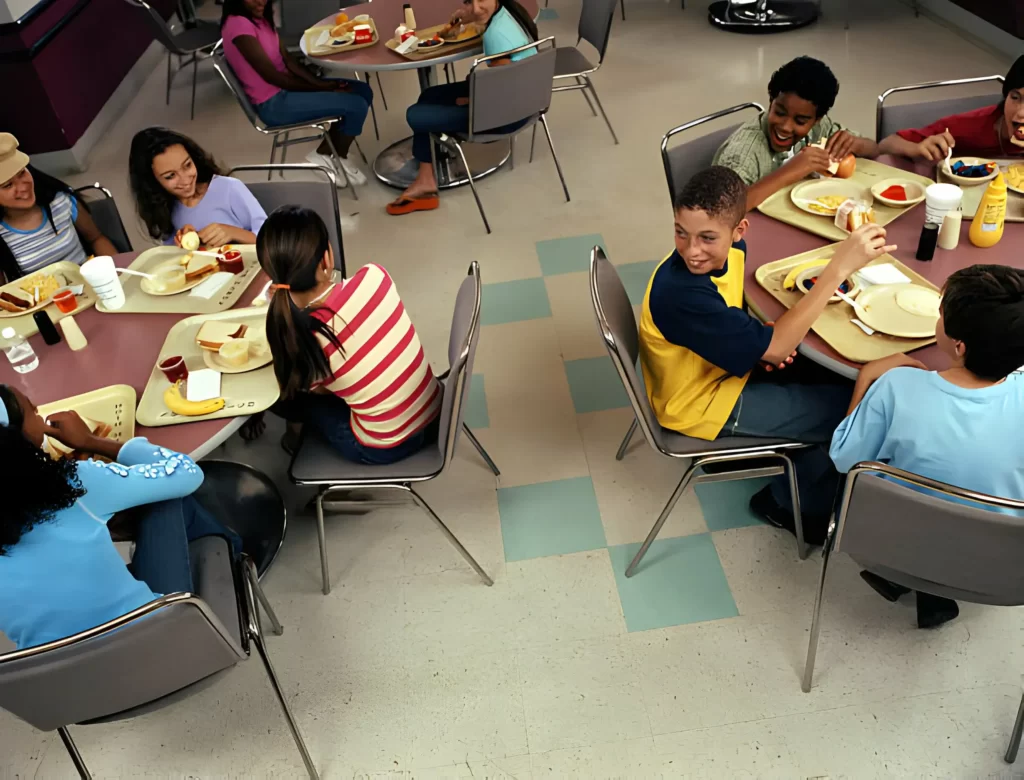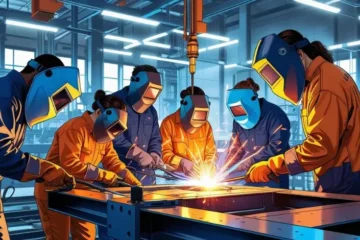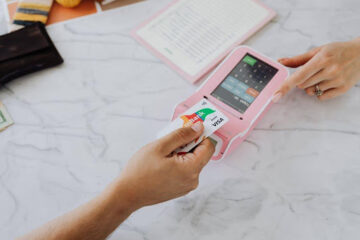Designing Welcoming School Cafeteria Spaces with Lunch Tables

School Cafeteria
Creating a welcoming and functional school cafeteria is critical to the school environment. The design and arrangement of school lunch tables play a significant role in this process, influencing students’ ambiance, social interactions, and dining experience. This article explores the various elements in designing effective and inviting school cafeteria spaces, emphasizing the strategic use of lunch tables.
Importance of Layout and Space Management
The layout of a school cafeteria is pivotal in determining its functionality and appeal. Effective space management ensures smooth traffic flow and comfortable seating arrangements.
The positioning of school lunch tables should allow for easy access and exit, minimizing congestion during busy meal times. Adequate spacing between tables is also crucial for providing a relaxed dining experience and facilitating ease of movement.
An organized and thoughtfully arranged cafeteria can significantly enhance the usability and atmosphere of the space. Clear signage and distinct zones for different activities like ordering, eating, and disposing of waste further streamline the cafeteria experience, making it more efficient and enjoyable for students.
Table Shapes and Sizes for Diverse Needs
Choosing the right shapes and sizes of lunch tables can cater to the diverse needs of students. Round tables encourage group interaction and equality, as everyone sits equidistant from each other.
Long rectangular tables can accommodate more students and are ideal for larger cafeterias. Adjustable or foldable tables offer versatility, allowing the cafeteria space to be used for various other school activities.
The selection of table shapes and sizes should be based on the number of students, the available space, and the desired social dynamics. Consideration of the age group is also essential, with younger students requiring small, more accessible tables and older students needing larger workspaces to accommodate them comfortably.
Material and Durability Considerations
The material of school lunch tables is a key factor in their longevity and maintenance. Tables should be made of durable, easy-to-clean materials to withstand daily wear and tear. Materials like laminated wood or metal can be both sturdy and aesthetically pleasing.
The choice of material also impacts the ease of maintenance and cleanliness, which is crucial in a food-serving environment. Using sustainable and eco-friendly materials can also reflect the school’s commitment to environmental responsibility. Surfaces that resist scratches and stains are preferable, ensuring the tables remain presentable and hygienic over time.
Color and Design for a Pleasant Ambiance
Colors and design elements play a significant role in creating a pleasant cafeteria ambiance. Bright and cheerful colors can make the cafeteria feel more inviting and lively.
The design of the tables, including their color and finish, should complement the overall decor of the cafeteria. Creative designs, such as thematic or school-spirit-inspired tables, can add to the space, making it more engaging and enjoyable for students.
The use of color psychology can also be considered, with certain colors promoting appetite and a positive mood, thereby enhancing the dining experience.
Incorporating Social Interaction Zones

Designing social interaction zones within the cafeteria can enhance the overall dining experience. These zones can be facilitated with clusters of tables designed for group activities or socializing. They provide spaces where students can interact, collaborate, and build social relationships.
The creation of such zones helps in breaking the monotony of traditional cafeteria layouts, offering students a more dynamic and interactive environment. This could include areas with lounge-style seating or café-like settings that encourage casual and comfortable interactions,giving a sense of community and belonging among students.
Ergonomics and Comfort in Seating
Ergonomics and comfort are crucial in selecting chairs and benches for lunch tables. Ergonomic seating encourages good posture and reduces physical discomfort during meal times. Chairs and benches should be appropriately sized for the age group of the students using them.
Comfortable seating can significantly improve the overall dining experience, encouraging students to take their time and enjoy their meals. Chairs with adequate back support and at a suitable height relative to the tables can ensure that students are seated comfortably, reducing the likelihood of fidgeting or discomfort that can distract from their meals and social interactions.
Accessibility and Inclusivity in Design
Accessibility and inclusivity should be at the forefront when designing a school cafeteria. Lunch tables and seating arrangements should accommodate students with diverse needs, including those with disabilities. This includes providing wheelchair-accessible tables and ensuring the cafeteria layout is navigable for all students. An inclusive cafeteria design ensures that every student feels welcome and comfortable.
Features like adjustable table heights and seating options catering to various physical needs can make the cafeteria more inclusive, ensuring that all students can enjoy their lunches and socialize with their peers regardless of their physical abilities.
Conclusion
In conclusion, the design and arrangement of school lunch tables are essential components in creating a welcoming and functional school cafeteria. From layout and space management to materials, ergonomics, and inclusivity, each element contributes to the overall dining experience of students.
An effectively designed cafeteria serves as a space for eating and as a social hub, enhancing the daily life and interactions of the student body. By carefully considering these aspects, schools can create cafeterias that are not only practical but also enjoyable spaces for students to dine, socialize, and relax.










